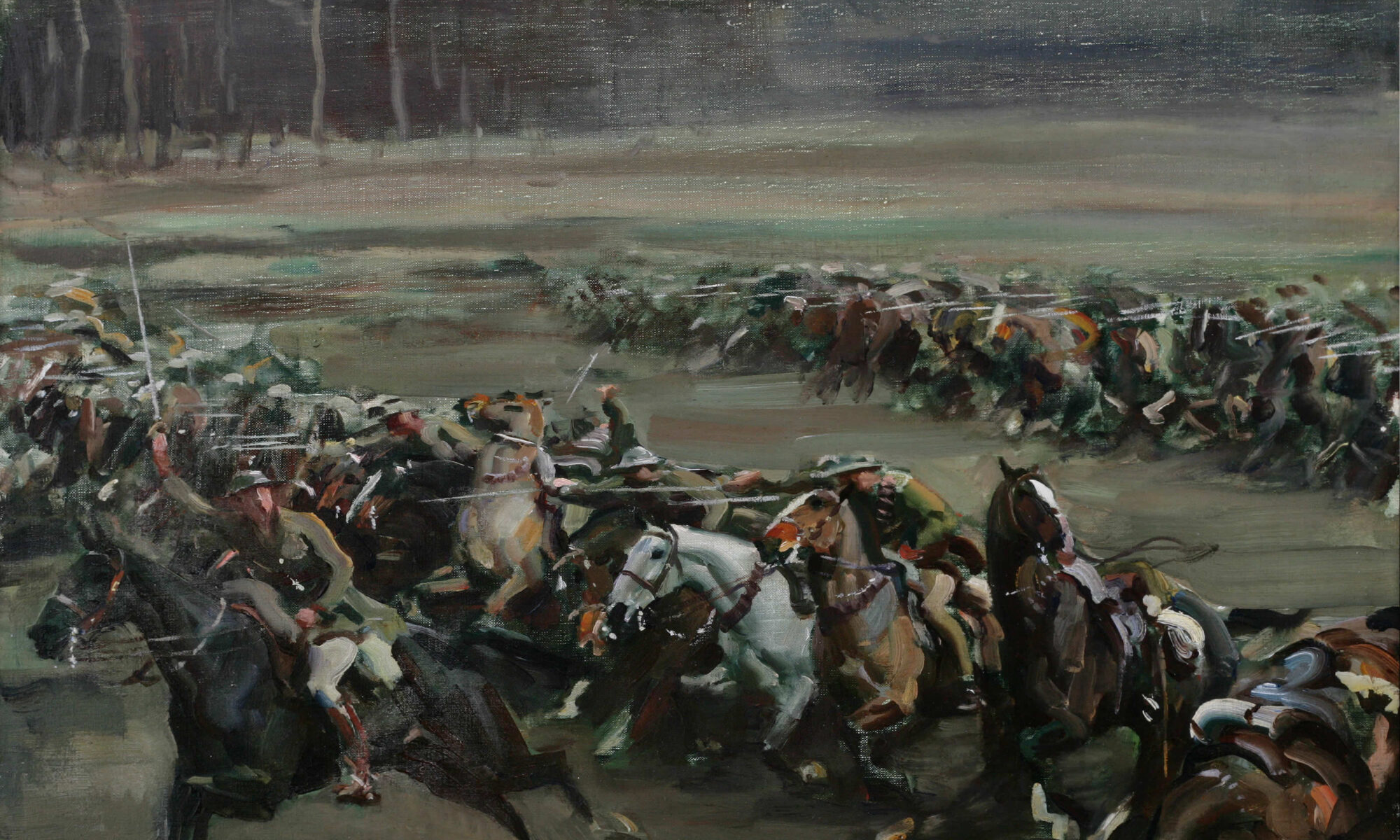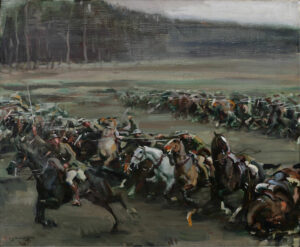
It’s estimated that some eight million horses, mules and donkeys died in WW1. As horrific as that is, it’s dwarfed by the human death toll: 9 to 11 million military personnel and 6 to 13 million civilians.
Sir Alfred Munnings served in a horse depot on the Western Front. There he painted a portrait of General Jack Seely astride his horse Warrior. It was done live in the field, and both artist and models came under fire. Thank God that most plein air painters experience nothing of this sort of violence.
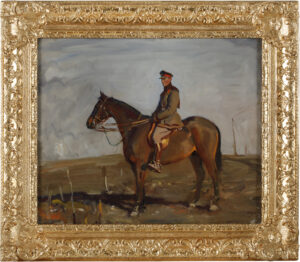
Seely and Warrior participated in one of the last great cavalry charges in modern warfare, during the Battle of Moreuil Wood. Both survived, as commanding officers so often do. Charge of Flowerdew’s Squadron is a scene from that engagement. Canadian Lieutenant Gordon Flowerdew is shown leading a charge against two machine gun lines. Flowerdew was fatally wounded. Though the German advance was checked, a quarter of the men and half of the horses were lost.
In 1918, cameras weren’t fast enough to capture this action; today a photographer wouldn’t be allowed this close. Likewise, plein air painting is incapable of documenting a scene like this. The action is too fast. More importantly, this painting required a thoughtful distillation of experience and emotion. That comes with time.
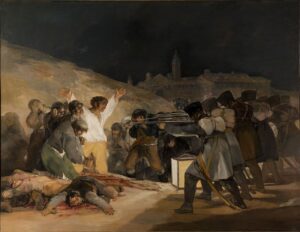
It took a painter like Munnings, with his up-close experience of cavalry and horses, war and death, to process and paint the unimaginable. That’s why Francisco Goya’s The Third of May 1808 is so gut-wrenching; he experienced the horrors of war and then went back to his studio to distill it into a canvas of incredible bleakness.
Prudence Heward (a Canadian who should be better known) was one of many artists who dropped their brushes and went to the aid of Britain. A.Y. Jackson, Lawren Harris and Fred Varley came from Canada; Arthur Streeton from Australia. Of course, many British artists served as well, including Stanley Spencer, David Bomberg and, of course, Alfred Munnings. And American poet Joyce Kilmer was killed at the Second Battle of the Marne.
Some of these artists were attached as war illustrators (as Winslow Homer had done in our own Civil War). Some just picked up a gun and joined up. Their calling in art was subservient to their calling as human beings.
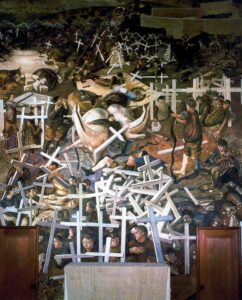
WW1 was the last of a particularly heinous kind of war, the kind where rulers used their citizenry in an elaborate game of chess, with dismal outcomes for both the dead and the survivors.
“When I left the Slade and went back to Cookham, I entered a kind of earthly paradise. Everything seemed fresh and to belong to the morning. My ideas were beginning to unfold in fine order when along comes the war and smashes everything,” Sir Stanley Spencer wrote. “The war changed me. I no longer have that assurance and feeling of security I had before.” He went on to make a fine hash of his life, something that today we might understand as the result of PTSD.
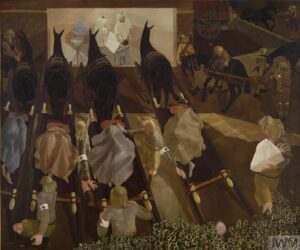
Spencer was asked to paint the interior walls of Sandham Memorial Chapel, a memorial to Lieutenant Henry Willoughby Sandham and the “forgotten dead” of the First World War. In all his war art, Spencer concentrated on the soldier’s everyday experiences, pointedly eschewing any sense of grandeur. R. H. Wilenski is widely quoted as saying that “every one of the thousand memories recorded had been driven into the artist’s consciousness like a sharp-pointed nail.” But these are the nails of the Cross, the nails of a transformative suffering, not the nails of normal human experience.
Reserve your spot now for a workshop in 2025:
- Advanced Plein Air Painting, Rockport, ME, July 7-11, 2025.
- Sea and Sky at Acadia National Park, August 3-8, 2025.
- Find Your Authentic Voice in Plein Air, Berkshires, MA, August 11-15, 2025.
- Immersive In-Person Fall Workshop, Rockport, ME, October 6-10, 2025.

